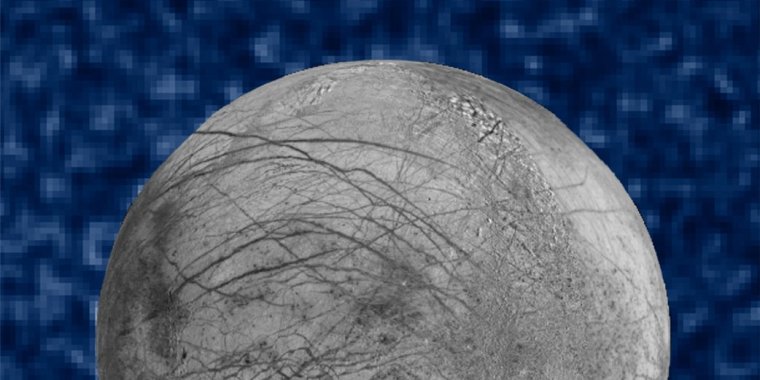| News / Space News |
Possible Water Plumes on Jupiter's Moon Europa
NASA | SEPTEMBER 27, 2016
Astronomers using NASA's Hubble Space Telescope have imaged what may be water vapor plumes erupting off the surface of Jupiter's moon Europa. This finding bolsters other Hubble observations suggesting the icy moon erupts with high altitude water vapor plumes.

This composite image shows suspected plumes of water vapor erupting at the 7 o'clock position off the limb of Jupiter's moon Europa. ![]()
The plumes are estimated to rise about 125 miles (200 kilometers) before, presumably, raining material back down onto Europa's surface. Europa has a huge global ocean containing twice as much water as Earth's oceans, but it is protected by a layer of extremely cold and hard ice of unknown thickness.
The plumes provide a tantalizing opportunity to gather samples originating from under the surface without having to land or drill through the ice.
The team observed these finger-like projections while viewing Europa's limb as the moon passed in front of Jupiter.
The original goal of the team's observing proposal was to determine whether Europa has a thin, extended atmosphere, or exosphere.
Using the same observing method that detects atmospheres around planets orbiting other stars, the team realized if there was water vapor venting from Europa's surface, this observation would be an excellent way to see it.
If confirmed, Europa would be the second moon in the solar system known to have water vapor plumes. In 2005, NASA's Cassini orbiter detected jets of water vapor and dust spewing off the surface of Saturn's moon Enceladus.
Europa's ocean is considered to be one of the most promising places that could potentially harbor life in the solar system.
YOU MAY ALSO LIKE


